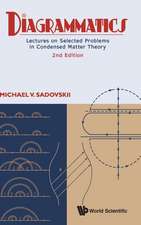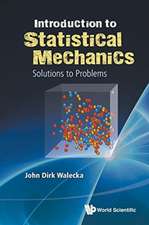Graphene: A New Paradigm in Condensed Matter and Device Physics
Autor E. L. Wolfen Limba Engleză Hardback – 7 noi 2013
| Toate formatele și edițiile | Preț | Express |
|---|---|---|
| Paperback (1) | 339.33 lei 31-37 zile | |
| OUP OXFORD – 8 iun 2016 | 339.33 lei 31-37 zile | |
| Hardback (1) | 734.90 lei 31-37 zile | |
| Oxford University Press – 7 noi 2013 | 734.90 lei 31-37 zile |
Preț: 734.90 lei
Preț vechi: 1052.25 lei
-30% Nou
Puncte Express: 1102
Preț estimativ în valută:
140.64€ • 145.09$ • 119.03£
140.64€ • 145.09$ • 119.03£
Carte tipărită la comandă
Livrare economică 21-27 februarie
Preluare comenzi: 021 569.72.76
Specificații
ISBN-13: 9780199645862
ISBN-10: 0199645868
Pagini: 318
Ilustrații: 167 b/w illustrations
Dimensiuni: 177 x 248 x 22 mm
Greutate: 0.8 kg
Editura: Oxford University Press
Colecția OUP OxfordOUP Oxford
Locul publicării:Oxford, United Kingdom
ISBN-10: 0199645868
Pagini: 318
Ilustrații: 167 b/w illustrations
Dimensiuni: 177 x 248 x 22 mm
Greutate: 0.8 kg
Editura: Oxford University Press
Colecția OUP OxfordOUP Oxford
Locul publicării:Oxford, United Kingdom
Recenzii
The book is a well written and concise introduction to the structure, synthesis, properties, and applications of graphene
The production of this book is to Oxford University Press's usual high standards, and the contents provide an excellent overview of the current fundamental understanding and potential exploitation of this astonishing material
This book on graphene gives an up-to-date account of this academically interesting but technologically useful material. It covers nearly every aspect of the subject. While the book has a broad coverage, the discussion is deep and thorough. Only basic knowledge in quantum mechanics is needed in reading the book. It can be used as a textbook for advanced undergraduate and graduate students, or as a general reference for researchers in this field. Researchers will find the bibliography at the end of the book very useful. I highly recommend this book to any person who is interested in graphene.
The production of this book is to Oxford University Press's usual high standards, and the contents provide an excellent overview of the current fundamental understanding and potential exploitation of this astonishing material
This book on graphene gives an up-to-date account of this academically interesting but technologically useful material. It covers nearly every aspect of the subject. While the book has a broad coverage, the discussion is deep and thorough. Only basic knowledge in quantum mechanics is needed in reading the book. It can be used as a textbook for advanced undergraduate and graduate students, or as a general reference for researchers in this field. Researchers will find the bibliography at the end of the book very useful. I highly recommend this book to any person who is interested in graphene.
Notă biografică
E. L. Wolf is a Fellow of the American Physical Society. His research in the area of condensed matter physics contributed strongly to understanding of superconductive tunnelling junctions and the superconducting proximity effect. Dr. Wolf is author of more than 100 refereed research papers and, more recently, of five monographs in areas related to nanotechnology as well as to superconductive electron tunnelling spectroscopy. Dr. Wolf has held positions in industry, two years as Program Director at the National Science Foundation, and academic appointments at the Ames Laboratory of the US Dept. of Energy as well as at Polytechnic Institute of New York University.



























